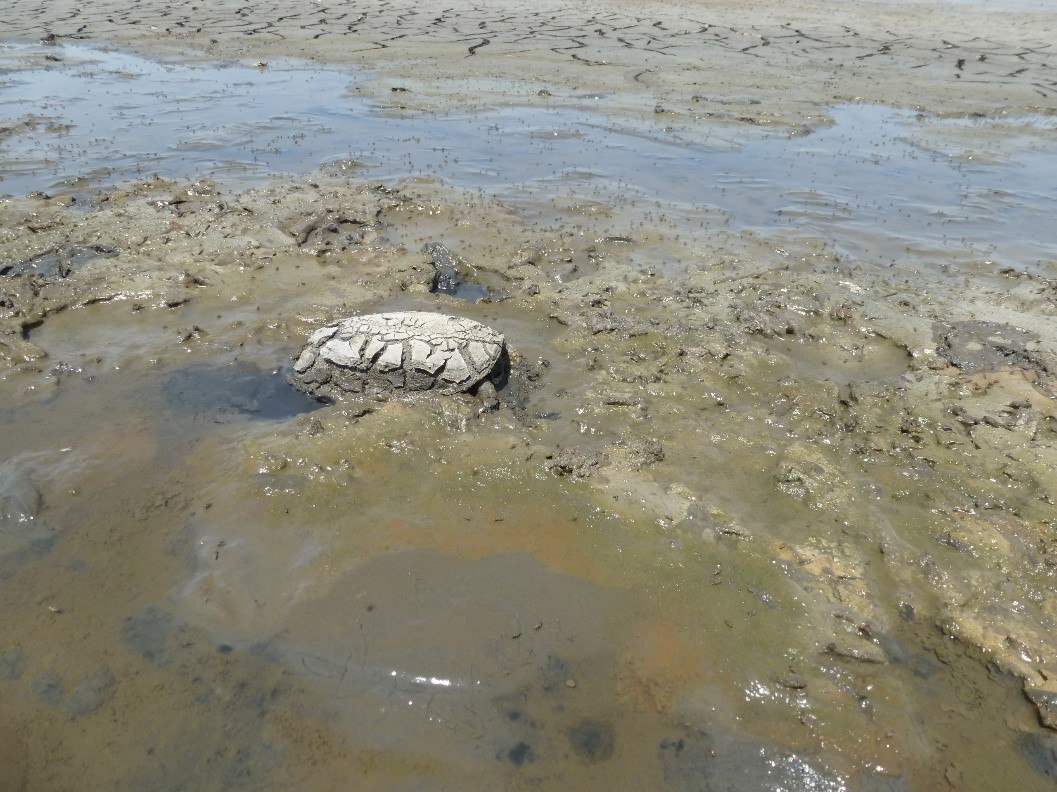The Santa Olalla pond has dried up. The only area remaining little wet is a small trickle of spring water that runs along its southern shore, maintaining a tiny muddy stream. We can hardly see them, but if we look closely, in the mud, we can see small dark spots… moving! They are pond turtles, immobile on the areas where the water slowly comes out. From time to time, they show their snouts out to breathe. They hold on as long as there is still some water left, but… how long will they be able to survive?
In the lagoons of Doñana, there the are important populations of two species of pond turtles: the European pond turtle (Emys orbicularis) and the Spanish pond turtle (Mauremys leprosa). These species prefer long-term or even permanent lagoons, where they remain during the summer, which is their main laying period. The greatest abundance of pond turtles in Doñana is asscoiated with the area of the large lagoons, which were considered permanent until recent years. However, especially in the last decade, lagoons have been flooding less and for shorter periods. Even Santa Olalla, the largest permanent lagoon in Doñana, has dried up completely this year and last. The desiccation of these places, functioning as summer refuges for many species, is seriously affecting pond turtles, which are trying to survive in the mud flat that Santa Olalla is becoming as it dries up.
During these years, we have observed turtles completely trapped in the mud, even losing their mobility. We cannot confirm their deaths, as we do not know if they will survive when the wet mud finally turns into a completely dry field. We could pull some of them out of the mud and take them to open water areas, but we have also taken out some of them already dead, trapped in the mud.
In this wet mud, they are very vulnerable to predators. Last year, when Santa Olalla dried up in September, we found dozens of pond turtle shells eaten by wild boards. This year there are fewer pond turtles in the lagoon, and now that it has dried again, we have hardly detected this predation. However, we still observe with admiration, how the turtles are able to resist as long as there is some water or mud left.


 Las altas temperaturas están provocando que las lagunas y las marismas de Doñana pierdan agua rápidamente
Las altas temperaturas están provocando que las lagunas y las marismas de Doñana pierdan agua rápidamente




